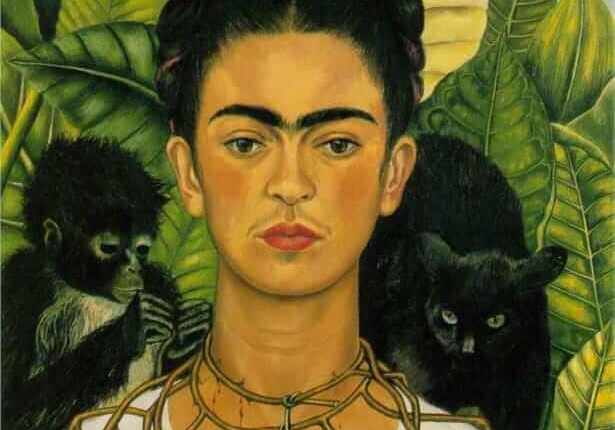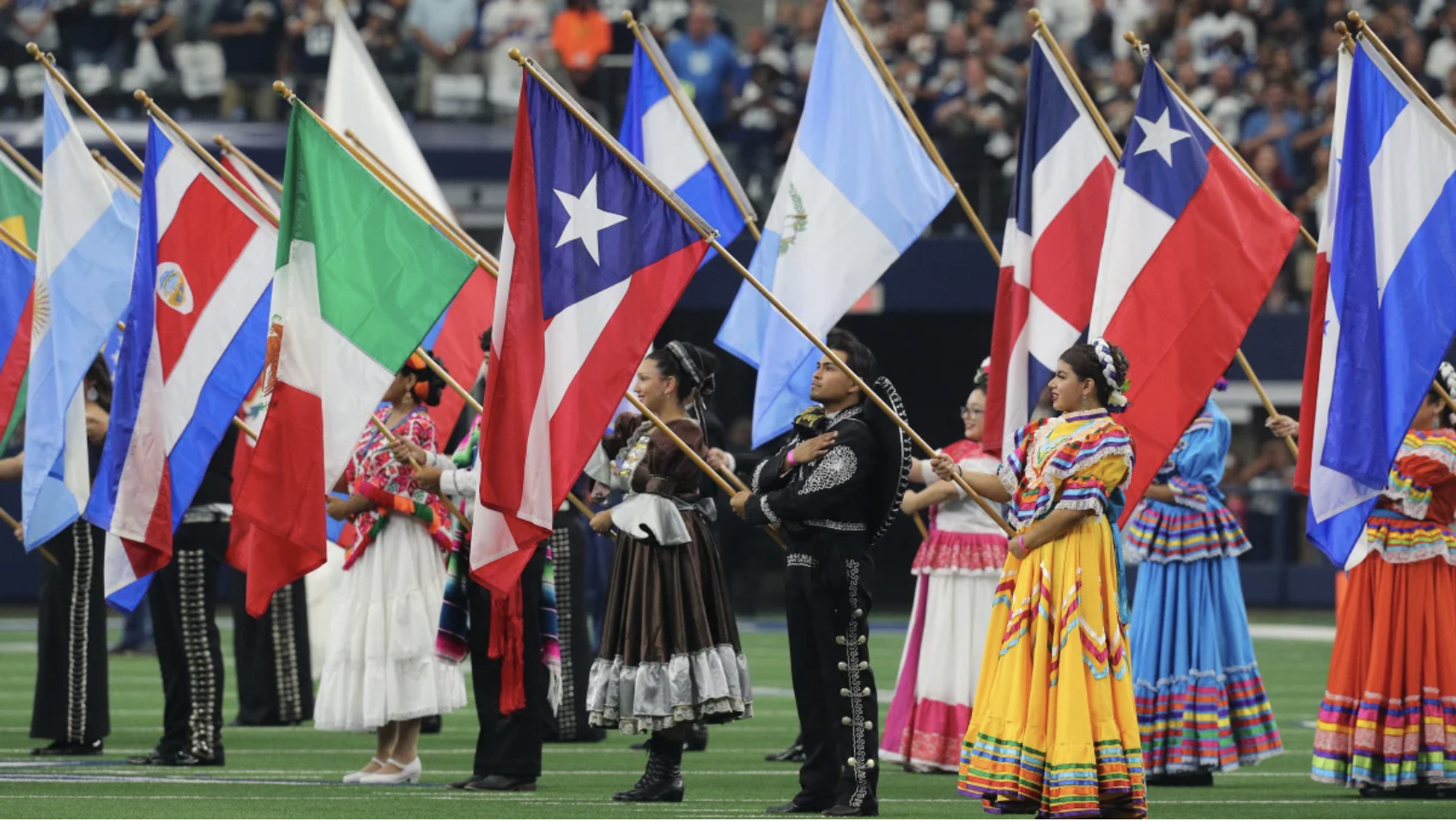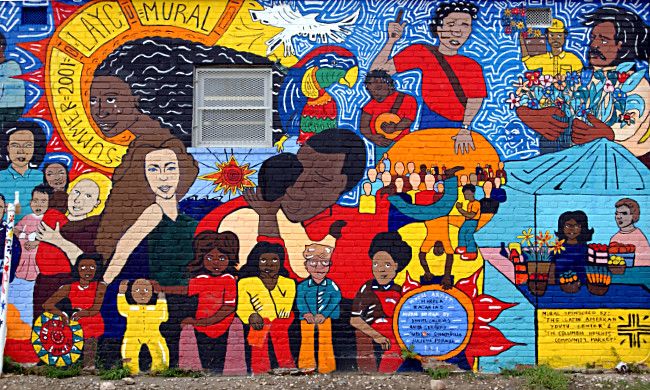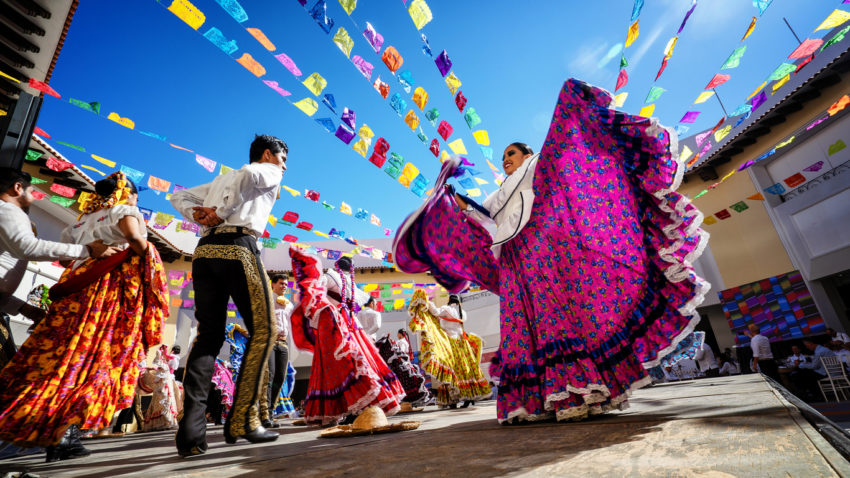NATIONAL HISPANIC HERITAGE MONTH
September 15 – October 15
September 15 – October 15
To recognize Hispanic and Latin Heritage Month and honor the contributions, cultures, and histories of the American Latino communities, we have pulled together some important resources and encourage you to reflect, learn and continue taking actions that build more inclusivity in our communities and workplace.
According to the U.S. Census, people of “Latino or Hispanic” ethnicity are currently the largest minority group in the United States. Language is always shifting, and in order to be respectful and inclusive, it’s important to understand what “Hispanic” means in the U.S. and to always be mindful of preferred terminology.
Video from the National Park Service introducing and celebrating staff who “share their heritage and a small taste of the immense diversity of the Hispanic and Latinx experience.” — Source
National Hispanic Heritage Month began in 1968 as “Hispanic Heritage Week” under President Lyndon Johnson and was expanded by President Ronald Reagan in 1988 to cover a 30-day period starting on September 15 and ending on October 15. It was enacted into law on August 17, 1988, with the approval of Public Law 100-402.
The month-long celebration recognizes the independence days of several Latin American countries, including Costa Rica, El Salvador, Guatemala, Honduras, and Nicaragua on September 15th; Mexico on September 16th; and Chile on September 18th. Holidays that recognize Hispanic contributions — such as Virgin Islands-Puerto Rico Friendship Day which is celebrated in the U.S. Virgin Islands on the second Monday in October — are also recognized during this time. Source 1 | Source 2
Throughout Canada, in each and every year, the month of October is to be known as “Latin American Heritage Month”.
In 2018, the Parliament of Canada proclaimed October Latin American Heritage Month in recognition of the Latin American community’s tremendous contribution to Canadian society.
Hailing from all 20 Latin American countries, Canadians of Latin American origin make up a large and growing community in Canada. They enrich our national fabric with their diverse and vibrant cultures, cuisine, music, dance, and more. Also, members of the Latin American community play an important role in Canada’s growth and prosperity, thanks to their entrepreneurial spirit.
We invite all Canadians to learn more about Latin American heritage and to honour the rich cultural and artistic traditions of our fellow Canadians of Latin American origin. We wish you a wonderful and colourful Latin American Heritage Month! Source 1 | Source 2

Self-Portrait with Thorn Necklace and Hummingbird was painted by Frida Kahlo in 1940. — Source
A true American hero, Cesar Chavez was a civil rights, Latino and farm labor leader; a genuinely religious and spiritual figure; a community organizer and social entrepreneur; a champion of militant nonviolent social change; and a crusader for the environment and consumer rights.
On April 8, 1993, Ellen Ochoa became the first Hispanic woman in the world to go into space. Ochoa was aboard the Discovery shuttle for a total of nine days while conducting important research into the Earth’s ozone layer. Since that ground-, or sky-, breaking moment, Ochoa has gone on a further three space flights, logging 1,000 hours in space in total. Source
Roberto Enrique Clemente Walker is one of the greatest athletes and humanitarians of the 20th century. For the people of Puerto Rico, he is one of the ultimate symbols of national pride, not just for the records he set but for the lives he touched with his activism and with the simple power of watching someone from your community achieve excellence without compromising their character.
San Francisco has many overlapping histories. Military history, LGBTQ+ culture, immigrant stories, and much more make up its roots. For José Sarria, a LGBTQ+ activist in San Francisco, all the above applied.
Interest in Frida Kahlo’s life and work has soared in recent decades, as a Mexican artist and feminist icon. Even her self-expression and colorful, vivid personal style have sparked special interest in recent times. Source
Flor de Toloache – “Dicen” from Tiny Desk Concert. Latin Grammy-winning band Flor de Toloache is an all-female mariachi band that features women from many different Latinx backgrounds and is based in the United States.
Below is a curated list of museums throughout North America that celebrate, entertain, and educate guests about the innumerable contributions that Latino Americans have made to US history, society, and culture. Curated by: onetravel.com and hiplatina.com

Step into a world of art, culture, and history like never before with the Canadian Hispanic-Latin American Virtual Museum (CHLAVM), a groundbreaking virtual museum coming to life in 2024! CHLAVM invites you to embark on an extraordinary journey through time and space, exploring the wonders of human creativity from the comfort of your own home.
The Museum of Latin American Art (MOLAA) was founded in 1996 in Long Beach, California and serves the greater Los Angeles area. MOLAA is the only museum in the United States dedicated to modern and contemporary Latin American and Latino art. Since its inception, MOLAA has doubled its size and added a 15,000 sq. ft. sculpture garden. Its permanent collection now numbers over 1,300 works of art.
For over eight decades, the Bowers Museum has evolved in many ways. From a relatively small museum focusing on Orange County history, the Bowers is now 8.6 times larger. Now it has the distinction of being the largest museum in Orange County, and one of the finest cultural arts museums in the region. Its collections, programs, and exhibitions still include Orange County history, but now reflect the demographics of Southern California by celebrating its diverse cultural makeup, with major emphasis on the fine arts of the indigenous peoples of the Americas and the Pacific.
Museo de las Americas is the premier Latin American Art Museum in the Rocky Mountain region and has been celebrating the artistic and cultural achievements of their communities for over three decades, from ancient to folk to contemporary art. Museo De Las Americas is dedicated to educating our community through collecting, preserving, interpreting, and exhibiting the diverse arts and cultures of the Americas, from ancient to contemporary, through innovative exhibitions and programming.
The Pérez Art Museum Miami (PAMM)—officially known as the Jorge M. Pérez Art Museum of Miami-Dade County—is a contemporary art museum dedicated to collecting and exhibiting international art of the 20th and 21st centuries.
In 1982, Carlos Tortolero organized a group of fellow educators and founded the Mexican Fine Arts Center Museum, which opened its doors in 1987. The goal was to establish an arts and cultural organization committed to accessibility, education and social justice. The museum also provided a positive influence for the local Mexican community, especially since many other art institutions did not address Mexican art. Over the years, the institution has grown, its audience has broadened, and its reach now extends across the United States and beyond. To support this evolution, in 2001, the museum expanded to a 48,000 square-foot, state-of-the-art facility in the heart of Pilsen and in 2006 we unveiled a new name, the National Museum of Mexican Art.
The National Museum of Puerto Rican Arts and Culture (NMPRAC) is devoted to the promotion, integration and advancement of Puerto Rican arts and culture, presenting exhibitions and programming created to enhance the visibility and importance of the rich Puerto Rican arts tradition. Founded in 2000 by members of Chicago’s Puerto Rican community and local supporters of arts and culture, the NMPRAC serves as a one-of-a-kind institution that celebrates the best of Puerto Rico’s identity and heritage. Located in Humboldt Park, in the heart of Chicago’s Puerto Rican community, the NMPRAC is the only self-standing museum in the nation devoted to showcasing Puerto Rican arts and cultural exhibitions year-round.

El Museo Latino opened its doors in the historic Livestock Exchange Building on May 5, 1993, as the first Latino Art & History Museum and Cultural Center in the Midwest. In 1997, the museum moved to its present brick and red-tile-roof building. The original construction of 1887 was a school and was reconstructed in the 1930s. Today, El Museo Latino is one of only seventeen Latino museums in the United States. In conjunction with the exhibits, El Museo Latino develops educational programs that include lectures, presentations, films, art classes, workshops, demonstrations, art history classes, gallery talks, guided visits, and dance classes.
The National Hispanic Cultural Center is dedicated to the preservation, promotion, and advancement of Hispanic culture, arts, and humanities. The Center presents exhibitions, lectures, book readings, performing arts, and educational programming that are meaningful to the local community. It offers the Hispanic, Chicano, and Latinx artists a place to present their work and bring it to the national stage. The NHCC is committed to making a cultural home for the diverse identities that shape the community.
El Museo was founded more than 50 years ago by artist and educator Raphael Montañez Ortiz and a coalition of Puerto Rican parents, educators, artists, and activists who noted that mainstream museums largely ignored Latino artists. Since its inception, El Museo has been committed to celebrating and promoting Latino culture, thus becoming a cornerstone of El Barrio, and a valuable resource for New York City. El Museo’s varied permanent collection of over 8,000 objects, spans more than 800 years of Latin American, Caribbean, and Latino art, includes pre-Columbian Taíno artifacts, traditional arts, twentieth-century drawings, paintings, sculptures and installations, as well as prints, photography, documentary films, and video.
LACAP is a Toronto-based, not-for-profit arts organization dedicated to the implementation of art projects, which promote Latin American art in Canada with an emphasis on artistic excellence, critically engaged artistic practices, and hemispheric networks of exchange.
The Mexic Arte Museum is dedicated to enriching the community through education programs, exhibitions, and the collection, preservation, and interpretation of Mexican, Latino, and Latin American art and culture for visitors of all ages. Mexic-Arte Museum was founded in 1984 by artists Sylvia Orozco, Sam Coronado, and Pio Pulido in the Arts Warehouse, in downtown Austin, to share the art and culture of Mexico with Texas.
Located on the southern bank of the famed San Antonio River Walk, La Villita now occupies one artsy square block in the heart of downtown San Antonio. The Artisan village is listed on the U.S. government’s National Register of Historic Places, featuring architectural styles that range from adobe structures, to early Victorian and Texas vernacular limestone buildings. Today, La Villita is a treasured Artisan and Entrepreneur district with over 25 shops and galleries that showcase local handmade goods and home to over 200 events a year.
Learn more about just a few non-profit groups and organizations that work to celebrate and recognize Hispanic and Latin contributions and to elevate collaboration, perception, and representation.

HSF empowers students and parents with the knowledge and resources to successfully complete a higher education, while providing support services and scholarships to as many exceptional students, HSF Scholars and Alumni as possible.
Founded in 1973, “Mujeres Latinas en Acción (Mujeres) empowers Latinas by providing services which reflect their values and culture and by being an advocate on the issues that make a difference in their lives.” With this mission and the needs of the community always at the forefront, Mujeres provides high-quality, client-centered, bilingual/bicultural human services addressing critical issues such as domestic violence and sexual assault, leadership and youth development, positive parent support, and economic self-sufficiency. Mujeres also acts as a leading advocate on critical issues to ensure that the voices of those in the communities served are recognized among local and national lawmakers.
The Hispanic Institute is a nonprofit organization that provides an effective education forum for an informed and empowered Hispanic America. The Hispanic Institute manages several ongoing projects, including the study of Hispanic economic contributions, media monitoring, consumer fraud protection, citizenship education, and technology and telecommunication research.
LatinoLEAD brings together Minnesota Latinx leaders from across the state, that include various ethnicities, generations, and working sectors to have a greater social impact through collaboration, power building, and leadership development. They envision a world where “[their] Latinx community of all stages of their career are civically engaged, connected, supported, and seen as a vital voice of influence nationwide.” LatinoLEAD’s mission as Latinx leaders across all sectors is to “join together to create innovative strategies to drive and define policies and perceptions that advance Latino collective influence, success and power.”

Latino Public Broadcasting was established in 1998 and provides a voice to the diverse Latino community on public media throughout the United States. They are “the leader of the development, production, acquisition and distribution of non-commercial educational and cultural media that is representative of Latino people, or addresses issues of particular interest to Latino Americans.”
GreenLatinos provides an inclusive table at which its members establish collaborative partnerships and networks to improve the environment; protect and promote conservation of land and other natural resources; amplify the voices of low-income and tribal communities; and train, mentor, and promote the current and future generations of Latino environmental leaders for the benefit of the Latino community and beyond.
Since 1968, Sociedad Latina has worked in partnership with Latino youth and families to end destructive cycles of poverty, health inequities, and lack of educational and professional opportunities in our community. Through our Pathways to Success model we pioneer new and innovative solutions to the most pressing issues facing Latino youth today, supporting positive youth development from age 11-21, creating a community that supports young people, and training all youth to advocate for themselves and their communities.
Founded in 1982, CHCF is a Latino organization in New York that combines direct service with policy work that amplifies minority voices at the local, state, and national levels to advocate for education equity. CHCF combines education, capacity-building, and advocacy to strengthen the support system and continuum of learning for children and youth. Our vision is for a future where Latino children, youth, and families have equitable access to opportunities to succeed, are empowered to realize their full potential and are affirmed in their culture.

Social Responsibility, Diversity, Equity and Inclusion Initiatives, and Sustainable Operations.
